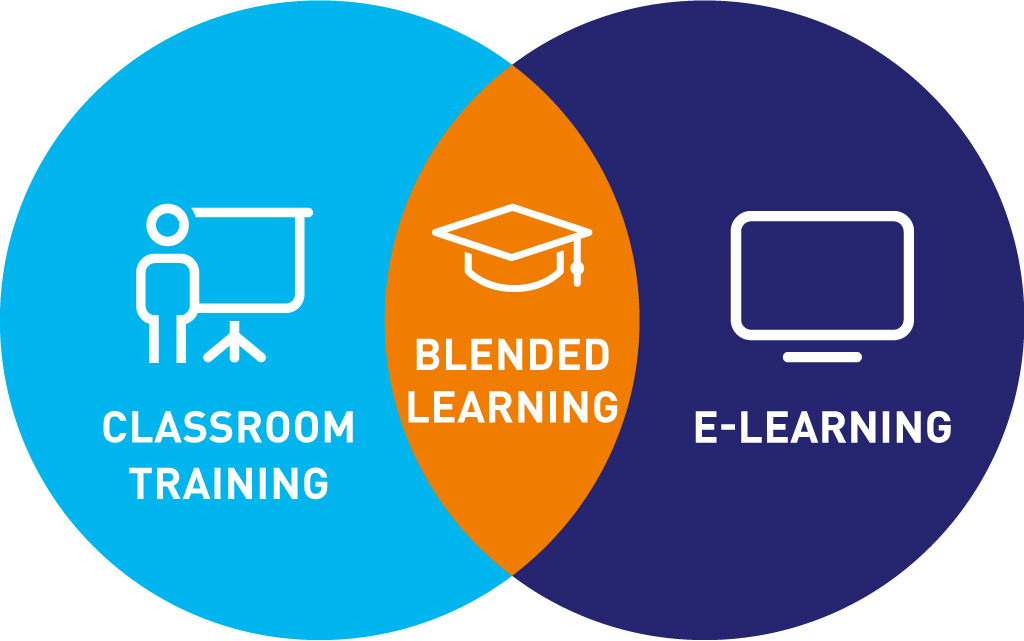
The current pandemic and the necessity to utilise EdTech for eLearning is gradually effectuating a new norm for education systems as they begin to re-imagine space and time through blended learning.
Researchers have defined blended learning in its simplest form as any instruction that combines traditional classroom learning experience with the online learning experience, allowing students to have more control over the learning situation, choosing the time, place, and pace for learning to happen.
EdTech has always promised the “anytime, anywhere” learning, and we are currently seeing the challenges and opportunities of this mode of learning.
For some Nigerian school administrators, It might seem a bit tricky when you start to think about incorporating elearning with the traditional learning method, as this is quite a new terrain.
A terrain that we believe could recast the way students and educators experience and deliver education.
A 2010 meta-analysis published by the U.S Department of Education suggests that students exposed to both face-to-face and online learning were more successful than students entirely using only one method or the other.
Also, Smyth et al’s 2012 Study suggest that blended learning’s ease and flexibility make students discover the effectiveness of planning their learning.
Technology, as we know, is changing everything, and with the blended learning merger, things are about to get a few notches higher.
EdTech companies are doing the most in producing a wide array of products, updating features, and building platforms that should allow educators to provide a classroom full of different learners’ individualised material, designed to suit their particular needs.
Blended learning should no longer be considered as just a fad because it is ultimately going to polish and add a new meaning to the learning pattern and experiences for primary and secondary school students in Nigeria going forward.
If your goal as a school administrator is to improve pedagogy, increase flexibility, and meet the needs of the new generation of k-12 students for a more effective, engaging, and personalised education, you should consider embracing blended learning into your school system.
Wondering How to Do This?

First of all, it is important to understand that the “HOW” in blended learning largely depends on the unique blend your school chooses to adopt.
Researchers have highlighted the instances below as some palpable ways of practices blended learning.
You might think about a classroom with computers or tablets available at different stations. While a small group of learners are working on a science activity with the teacher, others might be reading about the same topic online. While another group is conducting a virtual experiment, others might be writing lap reports using digital technologies.
Basically, all students are thinking about similar concepts and skills. Still, they can work at their own pace and level, completing activities and exercises suited to precisely where they are in their learning.
Of course, since technology is a factor here, collaboration with the use of the right online learning tool is possible. All students do not need to be in class at the same time for learning to occur.
Some blended learning environments are more separated in space and time so that the actual learning environment occurs virtually.
Students may read, watch online videos, complete experiments or problem sets in their homes, and then come together in the physical classroom to discuss what they have learned with the teacher.
If your school is new to blended learning, you can start by thinking about your instruction’s overall goals, the differences between and among your students, and what everyone hopes to get out of both the online learning and the face-to-face aspects of the instruction.
Remember, however, these are uncertain times, and more than anything else the safety of your students should be a priority; and since schools cannot remain shut forever, blended learning comes in as a contingency plan and a game-changer to curb the spread of the coronavirus as well as add a new meaning to the learning experience of the students.
Consider the words of Education Specialist, Michael Horn: “Blended Learning opens up space for teamwork and critical thinking like never before”.
Is this a culture you’d love your school to relate with?
Gradely is a personalised online learning platform which is at the forefront of this trend and positioned to take primary and secondary schools in Nigeria on a joy ride by transforming their largely transmissive method of teaching into a genuinely interactive one through the integration of online classes, digital Homeworks, video lessons, social class feed(real-time collaboration and interactions between students and teachers), online invigilated tests, examinations, gamification, etc.
On a Final Note!
Integrating classroom teaching with online learning is crucial in realising the impact of technology.
Are you a student? Keep in mind that this learning model combines the strength of both traditional and online learning methods to give you a more engaging learning experience.
And are you a school administrator? The adaptability of this model will enable you the flexibility to fine-tune your students’ needs as we navigate through these uncertain times. Through blended learning, you’ll take advantage of the best of both worlds, benefitting both the students and the teachers.
Have you thought about transitioning your school to a blended learning space yet? Visit our website at www.gradely.ng to get started!
Want to talk directly? Call us (+234) 810 059 8268 Guess what! We’re also social on Facebook, Instagram, Twitter and LinkedIn.
We can’t wait to hear from you 😊
Share Post:
admin
Get our latest articles in your inbox. Sign up for email alerts.


